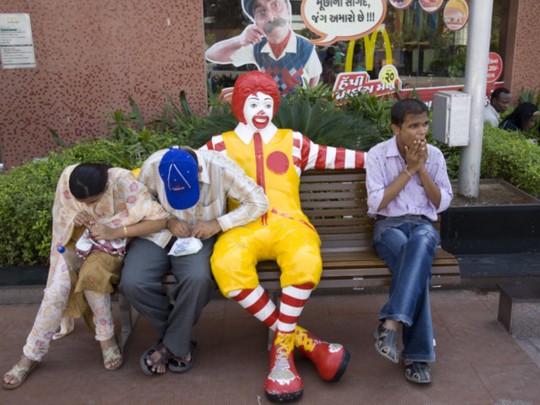
The business dictionary defines beta as the second level, external pilot test of a product before commercial quantity production. At the beta test stage, the product has already passed first-level, internal pilot testing and any glaring defects have been removed. But since the product may still have some minor problems that require user participation to be highlighted, it is released to a select group of people for testing under normal, everyday conditions of use.
The maiden budget by the new Indian government, headed by Prime Minister Narendra Modi, and his previous performance in Gujarat as its Chief Minister could be indicators of things to come. However, for once, international ratings agencies and former Prime Minister Manmohan Singh, who said the new budget lacks a road map, are on the same page.
Missing details
Standard & Poor’s Ratings Services said in a statement that the debut budget was a step in the right direction but short on detail. “It is unclear how the government will offset revenue loss from tax cuts and raising the income tax exemption threshold proposed in the budget on the expenditure side,” said the company’s credit analyst Agost Benard.
On the other hand, there is enough detail in Gujarat’s story from the past decade, even though much is obfuscated by the very public pats on the back by big business owners and hype about the state’s high gross domestic product (GDP), which grew at a compound annual growth rate of 10.28 between 2002 and 2012.
In one example of hyperbole, Anil Ambani, the younger of the Ambani >
brothers and Chairman of Reliance Group, attempted to paint a picture at last year’s Vibrant Gujarat Summit by reciting in chronological order the dates and places of birth of Mahatma Gandhi, Sardar Vallabhbhai Patel, his father Dhirubhai Ambani and Narendra Modi, stopping just short of equating them.
The fact that Gujarat makes it easy to set up businesses is something to aspire to. Maitreesh Ghatak, Professor of Economics, London School of Economics, tells GN Focus, “In general, making it easy to start and run a business is something good about the Gujarat model, as is making the bureaucracy more efficient and streamlined.”
But the praise does not seem to be all about ease of doing business. In fact, in a March study by the Planning Commission, Gujarat ranked second after Haryana as an industry-friendly state. Being attractive to investors is a good thing, provided there is due diligence on both sides — that the state benefits as much as the private body.
Gujarat seems to have benefited from using GDP as an indicator. Mukul Asher, Councillor and Advisor to the Faculty at Takshashila Institution in Bengaluru, which claims to be non-partisan, tells GN Focus, “Gujarat’s public finances are in a healthier state as compared to most states. It generates surplus on revenue (or current) budget, with the surplus used for investment. Its debt-to-state product or income ratio is well within the limit stipulated by the Reserve Bank of India. The power sector in Gujarat is in a healthy state, and it can even supply power to others.”
The debt trap
However, the Comptroller and Auditor General of India (CAG) has said the Gujarat government has accumulated 41 per cent higher debt than the previous financial year and burdened the exchequer with heavy interest liability at a higher rate. Under Modi’s leadership, the state government took a loan of Rs150.8 billion (about Dh9.1 billion) to adjust the monetary deficit of Rs110.2 billion. It pays an interest of Rs345 million every day and a large chunk of its revenue services debts.
While unwilling to speculate on the specifics of policies to come, writer, scholar and social activist Rohini Hensman has long critiqued the model. She tells GN Focus, “I expect the NDA government to replicate its pro-business and anti-poor policies in the country as a whole, and there are indications that this is happening. As Amartya Sen has pointed out, government spending on subsidies for the poor and schemes such as the Mahatma Gandhi National Rural Employment Guarantee Act are insignificant compared to subsidies for the rich (easy loans, tax holidays, subsidised power), and far from draining the economy, they actually stabilise it.”
Economists point out that GDP is not always a reliable indicator. In an interview with the Baltimore-based The Real News Network, Prof. Jayati Ghosh, Chairperson of the Centre for Economic Studies and Planning, Jawaharlal Nehru University, New Delhi, said, “The reason most people haven’t seen growth is because we adopted this model at the national level also — this idea that first of all, GDP growth is all that matters; secondly, that only the private corporate sector can deliver that GDP growth; and thirdly, to enable them to deliver that growth and to encourage them to do so, you have to incentivise them by providing all kinds of subsidies, fiscal and otherwise, and a lot of leeway in terms of acquisition of land and suppressing workers’ rights. And, unfortunately we find that even when you get the growth, it doesn’t deliver better conditions for most people.”
While Gujarat’s GDP record is good, along with that of Maharashtra, Tamil Nadu, Delhi, Haryana and Andhra Pradesh, its human development statistics show who’s paying for the growth. The percentage of poor in rural India has dropped from 39.6 per cent to 30.9 per cent between 2009-10 and 2011-12. Gujarat, which had started out with 37 per cent rural poor, has 31.4 per cent today, 0.5 per cent higher than the national average. Among 20 major states, its position in poverty reduction has slipped from 11th to 13th.
However, with the budget’s emphasis on job creation, the direction appears right. After all, the new government does not work only for the 31 per cent of people that voted it into power. n







